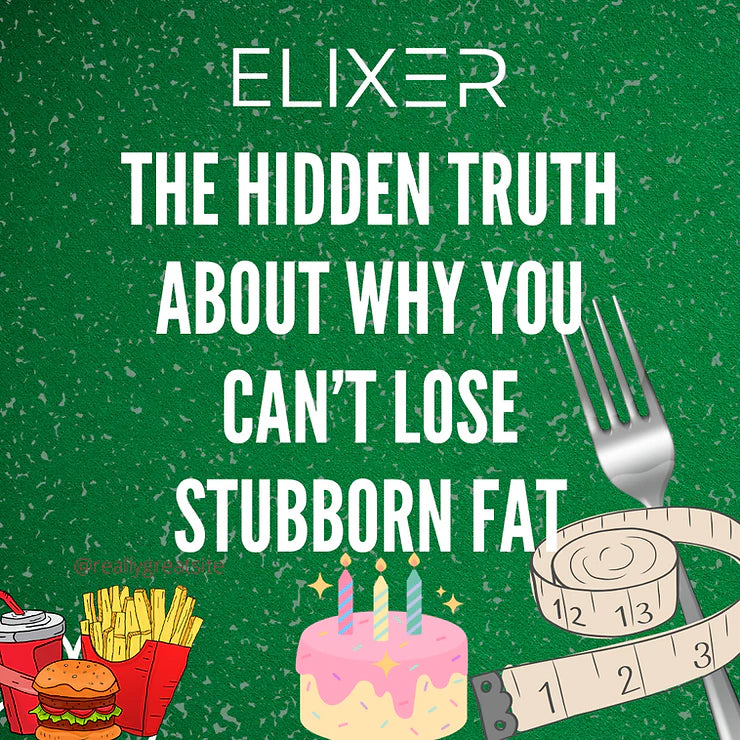When it comes to losing weight, many people feel trapped in an endless cycle of dieting, exercising, and frustration. Despite their best efforts, the fat they want to lose seems to cling stubbornly. The problem often lies not in the effort but in understanding how the body works. What are the real culprits? Carbohydrates, sugar, insulin resistance, and a lack of fat adaptation. Let’s dive into why this happens and how you can turn things around for sustainable fat loss.

Modern lifestyles are a far cry from how our ancestors lived. In the past, humans ate whole, unprocessed foods, and physical activity was an integral part of survival. Contrast that with 2025, where sedentary desk jobs, processed foods, and constant access to sugar-rich snacks dominate our daily lives.
This drastic shift has led to widespread metabolic dysfunction and made weight management more challenging than ever. You may have heard of keto, so what is ketosis, the opposite of this issue we’re talking about? Ketosis is a metabolic state where your body shifts from using glucose (derived from carbohydrates) as its primary energy source to using fat. When carb intake is significantly reduced, the liver begins to break down fatty acids, producing molecules called ketones.
These ketones serve as an alternative fuel source for the brain and body. Unlike glucose, ketones do not require insulin to enter cells, making ketosis a powerful way to lower insulin levels, encourage fat burning, and improve metabolic health. This metabolic shift can help resolve the fat-storage issues caused by excessive carbohydrate consumption and insulin resistance.
So Is glucose the culprit? in a nutshell, yes.
Within the context of explaining how glucose impacts weight gain and fat storage, particularly in diets high in refined carbs and sugar. However, it’s important to clarify that glucose itself isn’t inherently harmful. The problem arises when it’s consumed in excessive quantities, leading to elevated insulin levels and the issues of fat storage and insulin resistance.
1. Hidden Sugars in Processed Foods
Many processed foods, sauces, soups, and bread, contain added sugars to enhance flavour and extend shelf life.
For example, a single tablespoon of ketchup can contain about 4 grams of sugar.
2. Overconsumption of Refined Carbs
Foods like white bread, pasta, and pastries are rapidly broken down into glucose, contributing to a higher overall intake.
Even "healthy" options like granola bars or whole-grain bread can have significant added sugar.
3. Sugary Beverages
Soft drinks, energy drinks, and even fruit juices are major sources of glucose and fructose. A 12-ounce soda can contain about 39 grams of sugar, exceeding the daily recommended limit for most people.
4. Portion Sizes
Over the years, portion sizes have increased dramatically, leading to greater glucose intake in a single meal.
5. Frequent Snacking
Grazing on snacks throughout the day keeps insulin levels elevated, especially if the snacks are carb-heavy (chips, crackers, granola).
How Carbohydrates and Sugar Affect Your Body
Every time you eat carbohydrates, your body breaks them down into glucose, which enters your bloodstream. To manage this surge of glucose, your pancreas releases insulin, a hormone that helps cells absorb glucose for energy. Any glucose that isn’t immediately used is stored as glycogen in your liver and muscles. Once those storage spaces are full, excess glucose is converted into fat and stored in adipose tissue.
Here’s the catch: insulin is a "storage hormone," meaning it signals your body to store fat rather than burn it. If your diet is high in refined carbs and sugar, your insulin levels remain elevated throughout the day. This locks your body into fat-storage mode and prevents it from using stored fat as fuel.
Fat Adaptation: The Key to Burning Fat
In a typical high-carb diet, your body relies on glucose for energy. However, when you reduce carbohydrate intake, your body shifts to using fat as its primary energy source. This process, called fat adaptation, involves the production of ketones as an alternative fuel.
Becoming fat-adapted doesn’t happen overnight. It takes time for your body to adjust to burning fat efficiently, but once it does, you’ll notice several benefits:
-
Steady energy levels without sugar crashes.
-
Reduced hunger and cravings.
-
Improved fat-burning capacity, even at rest.
Insulin Resistance: A Major Barrier to Weight Loss
Chronically elevated insulin levels from frequent carb and sugar consumption can lead to insulin resistance, a condition where your cells become less responsive to insulin. This forces your pancreas to produce even more insulin to regulate blood sugar. Insulin resistance is a vicious cycle that promotes:
-
Increased fat storage.
-
Difficulty accessing stored fat for energy.
-
Higher risk of type 2 diabetes.
To break this cycle, you need to address the root cause: consistently high insulin levels.
Why Traditional Diets Often Fail
Many weight-loss strategies focus solely on calorie restriction and exercise, overlooking the role of hormones like insulin. While calorie balance matters, hormonal imbalances can sabotage your efforts. Common pitfalls include:
-
Overconsumption of "hidden sugars" in processed foods.
-
Ignoring the impact of insulin on fat storage.
-
Stress and poor sleep, which increase cortisol, another hormone that promotes fat storage.
-
Not allowing the body to become fat-adapted.
How to Structure a Diet for Fat Adaptation and Insulin Sensitivity
Here are actionable steps to encourage fat adaptation and reduce insulin resistance:
1. Reduce Carbohydrates
-
Focus on low-carb, nutrient-dense foods such as leafy greens, non-starchy vegetables, and low-glycemic fruits (e.g., berries).
-
Limit refined carbs like white bread, pasta, and sugary snacks.
-
Aim for 50-100 grams of carbs per day for gradual fat adaptation or below 50 grams for a ketogenic approach.
2. Prioritize Healthy Fats
-
Include sources of healthy fats such as avocados, olive oil, nuts, seeds, and fatty fish.
-
Avoid trans fats and limit vegetable oils like soybean or corn oil.
3. Increase Protein Intake
-
Protein helps preserve muscle mass during weight loss and provides satiety.
-
Opt for lean meats, poultry, eggs, tofu, and legumes.
4. Practice Intermittent Fasting
-
Intermittent fasting can help lower insulin levels and improve fat-burning.
-
Start with a simple 16:8 schedule (fast for 16 hours, eat within an 8-hour window).
5. Stay Hydrated
-
Drinking enough water is essential for metabolic processes and ketone production.
-
Aim for at least 2 liters of water per day.
6. Manage Stress and Sleep
-
Chronic stress raises cortisol levels, which can interfere with fat loss.
-
Prioritise 7-8 hours of quality sleep and incorporate stress-reducing activities like meditation or yoga.
7. Limit Hidden Sugars
-
Read food labels to identify hidden sugars in sauces, snacks, and beverages.
-
Replace sugary drinks with water, herbal tea, or black coffee.
8. Track Progress
-
Use a food diary or app to monitor your carb, fat, and protein intake.
-
Regularly check body composition changes (not just weight) to gauge progress.
The Long-Term Solution
Fat loss isn’t about quick fixes or starvation diets. It’s about understanding how your body’s metabolism works and making sustainable changes. By reducing carbs, prioritising healthy fats, and addressing insulin resistance, you can unlock your body’s ability to burn fat efficiently.
Remember, consistency is key. Give your body the time it needs to adapt, and you’ll be rewarded with steady, sustainable progress—and, most importantly, a healthier, more energised you.
For more tips and resources, check out our website at www.elixer.co.uk or email us at info@elixer.co.uk. We’re here to help you on your journey to better health.




